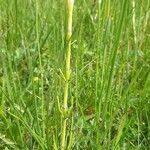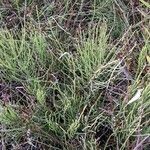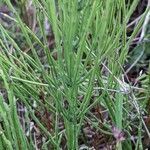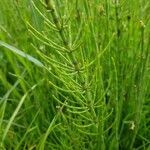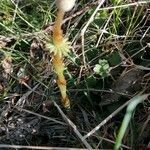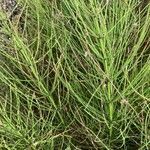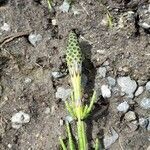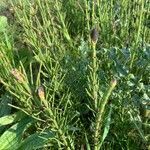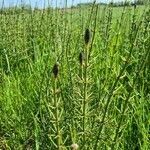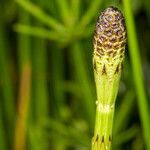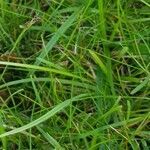Stems annual, all alike, 2–8 dm, deeply 5–10-sulcate, smooth to the touch but with minute transverse ridge-wrinkles on the angles, the stomates in a single broad band in each furrow, the central cavity small, less than 1/3 the diameter of the stem, about the size of the vallecular cavities; sheaths green, 5–10 mm, rather loose, with persistent teeth, these 3–7 mm, black or dark brown at least in part, with evident, often rather broad, pale and hyaline margins; branches few and irregular to numerous and whorled at the middle and upper nodes, 5–6-angled, simple, the first internode shorter than the associated stem-sheath; cone pedunculate, 1–3.5 cm, blunt, deciduous. Streambanks, wet meadows, and marshes; circumboreal, in Amer. s. to Pa., Ill., N.D., and Wash.
Aerial stems monomorphic, green, branched or unbranched, 20--80 cm; hollow center small, to 1/3 stem diam.; vallecular canals nearly as large. Sheaths elongate, 4--9 × 2--5 mm; teeth dark, 5--10, narrow, 2--5 mm, margins white, scarious. Branches when present only from midstem nodes, spreading, hollow; ridges 4--6; valleys rounded; 1st internode of each branch shorter than subtending stem sheath; sheath teeth narrow. 2 n =216.
A herb.
